Meryl Meisler took the teaching job to make ends meet. The job was at Roland Hayes Intermediate, a junior high school that’s still on Palmetto Street, but when Meisler was there, it was 1981, just a few years after a series of fires had turned large sections of the neighborhood to rubble. The rubble is the primary character in Meisler’s latest work — a book called PARADISE LOST BUSHWICK ERA DISCO that’s coming out next month and is the subject of a gallery show next week in Chelsea. Underneath it are the remains of a neighborhood that had been home to a vibrant Puerto Rican community and when it would be cleared away, it would be replaced by today’s Bushwick, where the colorful streaks of graffiti only hint at what had been.
The book’s introduction, penned curiously by New Criterion editor James Panero, refers to her as “the original Bushwick beatnik” and her status as an original scenester of the city’s various scenes has revived some recent interest in her work as a photographer, which has been ongoing since her first gallery show in 1974. Her first monograph was published some forty years later, in 2014, and it juxtaposed shiny black and white stills of Andy Warhol and Gloria Steinem sitting around and getting photographed in Studio 54 with photos Meisler would take on her way to work on Palmetto Street. When the New Yorker’s photo blog covered its release, it’s not hard to see which ones piqued their interest. For her, they are parts of the same cloth, a visual memoir that she’s also spent the last decade revisiting: her second title, Purgatory & Paradise: SASSY ’70s Suburbia & The City, had collected images from even earlier, namely the territory of suburban Long Island.
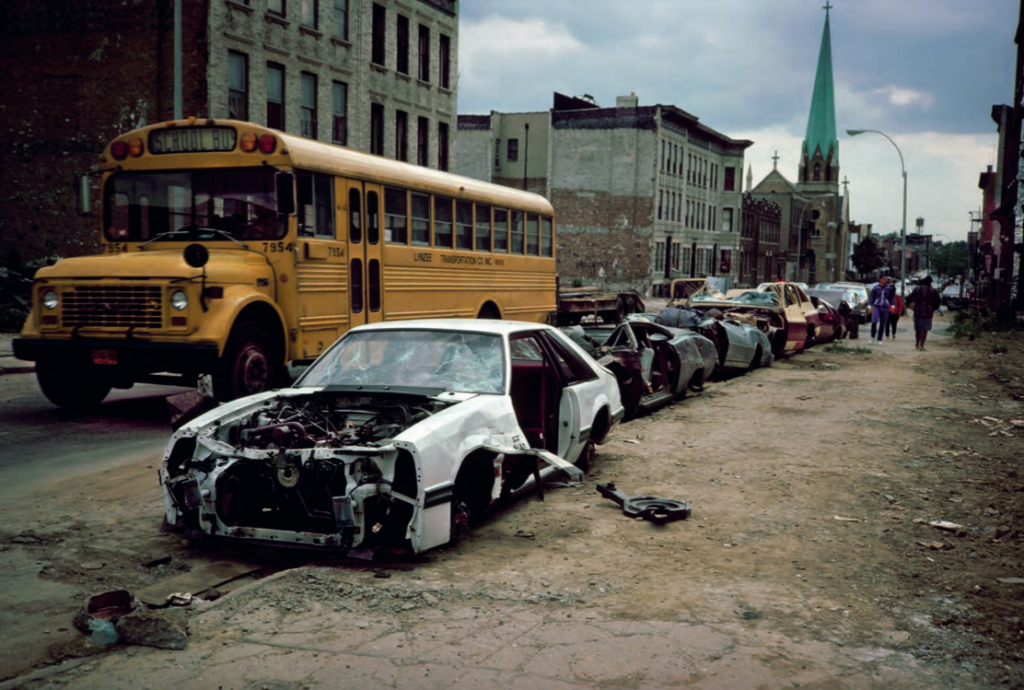
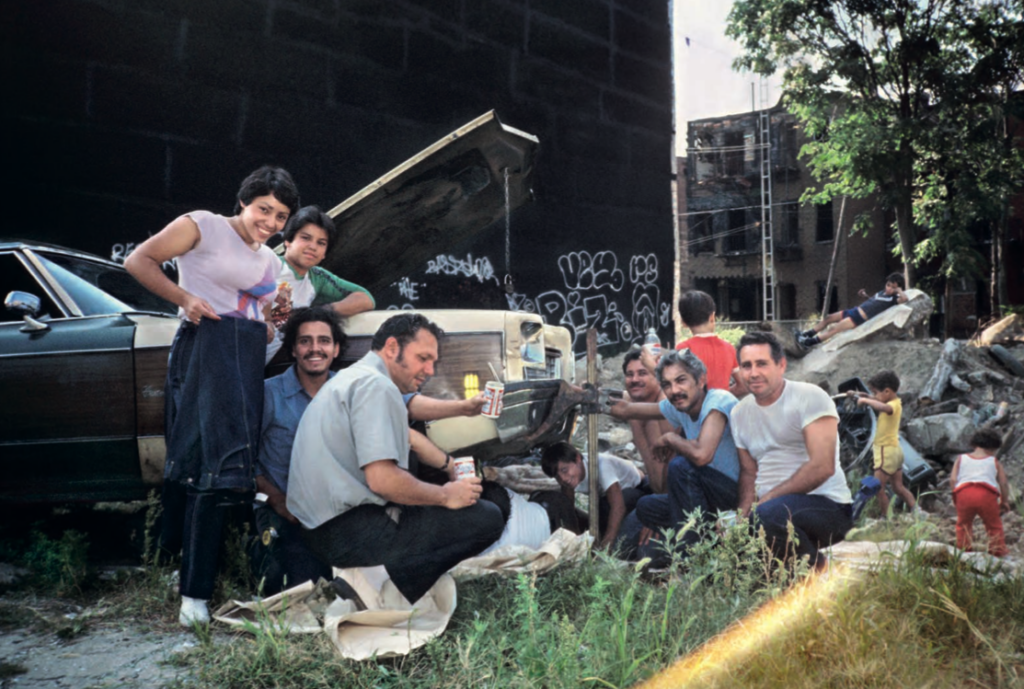
Meisler’s latest, however, is something of a reissue of her first – according to her website, copies of that one are entirely sold out. The book had been a project of the short-lived publishing arm of Bizarre, a Bushwick bar run by a French movie director that shuttered a while ago after its employees sued over his alleged policy of not paying them. This one, Meisler says, is still seeking distribution, but you can also pre-order a copy from the Strand.
The New Yorker, however, is wrong — it’s Meisler’s images of Bushwick that shine brightest and most startlingly. The burnt out apartment buildings register with an immediate shock value, but the everyday life around them complicates the picture. Meisler said her work was informed by a kind of purposeful optimism: she was searching for scenes that pointed toward the possibilities of the city experience under a political regime actively determined to wipe it out. One of the pictures from the book that I think about a lot shows a family picnicking in a burnt out lot, surrounded by disused automobiles; a recurring motif in Meisler’s images of the neighborhood in the era. One of the women in the photo had been one of her students — “the kids at school were impeccably dressed,” she remembers — and there is something almost Norman Rockwell about the afternoon’s casual domestic joyfulness.
Meisler’s optimism separated her from the bigger names from that era and whose images would create that indelible idea of a decade cartoonishly split between the despair of Nan Goldin and the corresponding chic of the pictures generation. Handheld and cheaply shot, Meisler’s images of Bushwick offer something else — images of neighborhood life hidden in plain sight. A 1984 feature in the Times would refer to Bushwick’s “insular community” as “little noticed by those outside.”
But to think of the neighborhood then as pre-gentrification feels fatalist, as if there was nothing else these buildings could become besides pastel-colored condominiums and gyms. Instead, the images suggest an alternate reality where today’s buildings can be torn down too and, collectively, we can discover that space can be used to build something else. Bushwick’s recovery following the 1977 fires had not been powered by the developers who would flock to the neighborhood three decades later nor even artists like Meisler, whose slow and apprehensive trickle across the East River would eventually be confused for the former. Following through on a campaign promise made notable largely by Ed Koch’s decision to use it to campaign in the neighborhood, Koch would order the construction of a village of new public housing developments, part of an ambitious billion dollar building program that has yet to be rivaled by his successors, who have largely focused, instead, on a dubious system of tax abatements to generate further affordable housing.
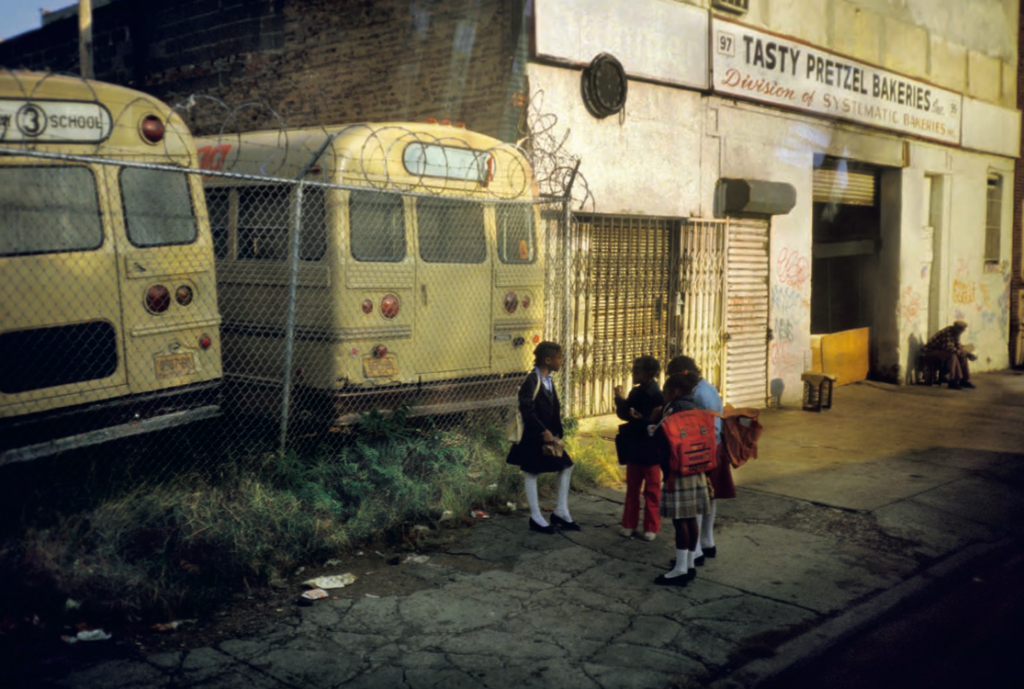
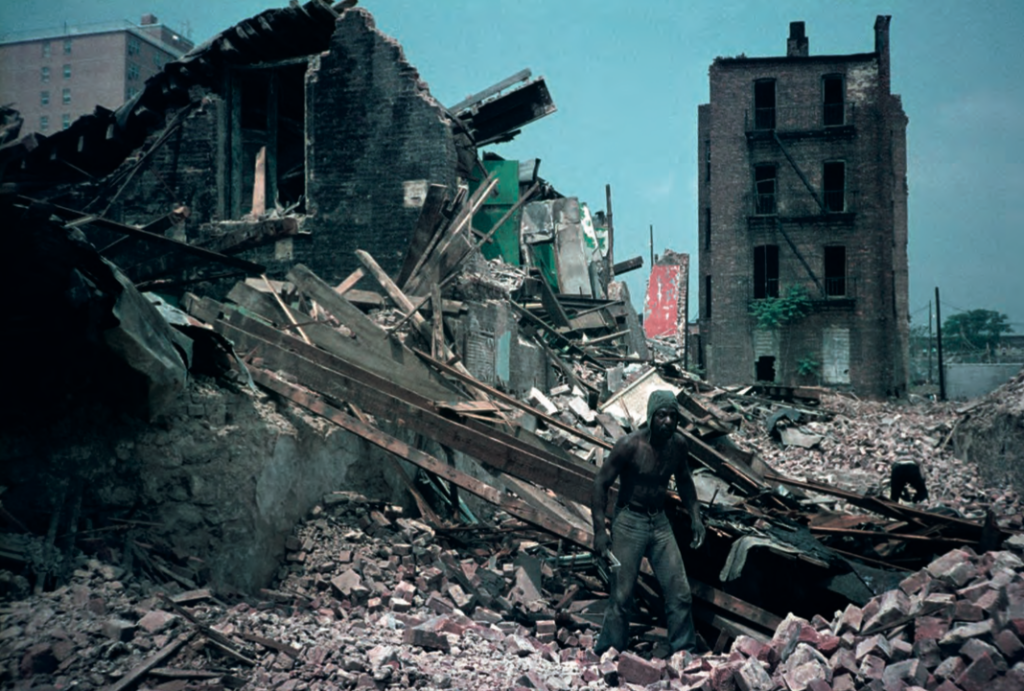
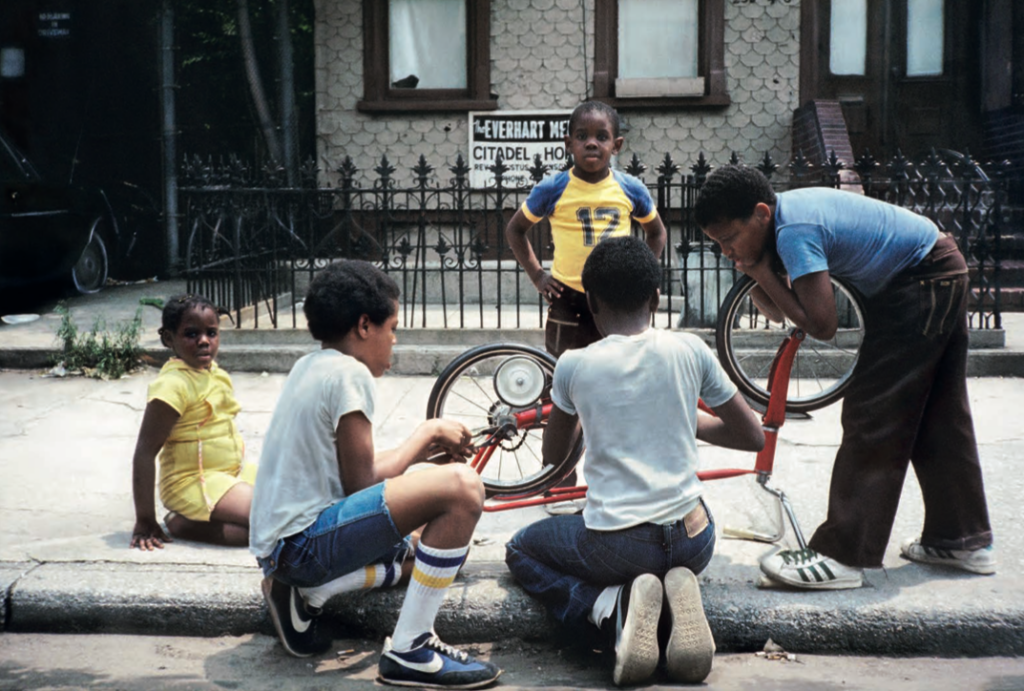
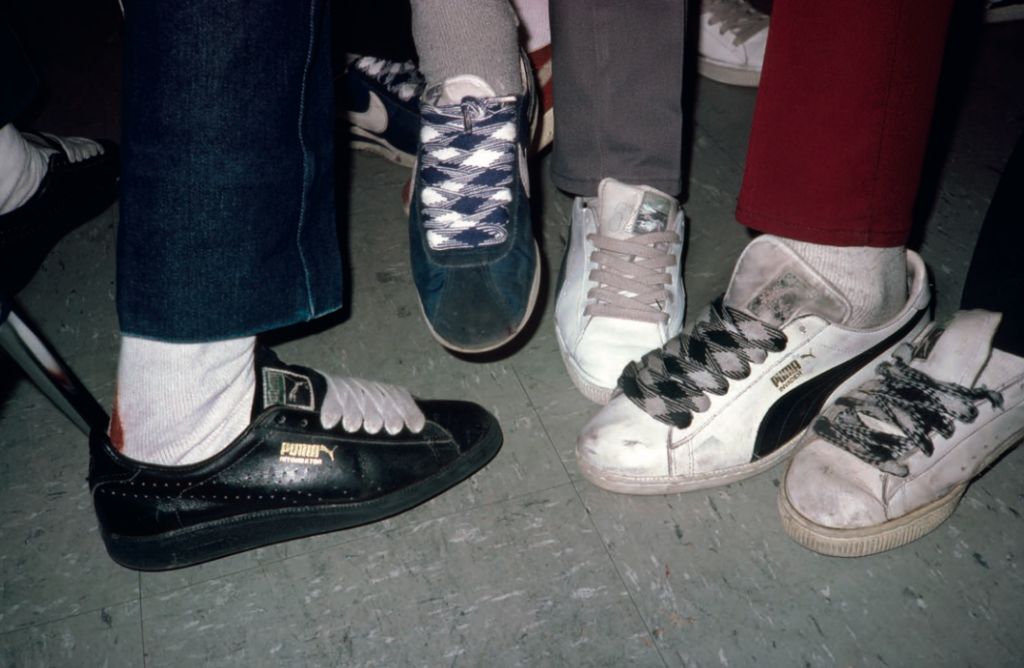
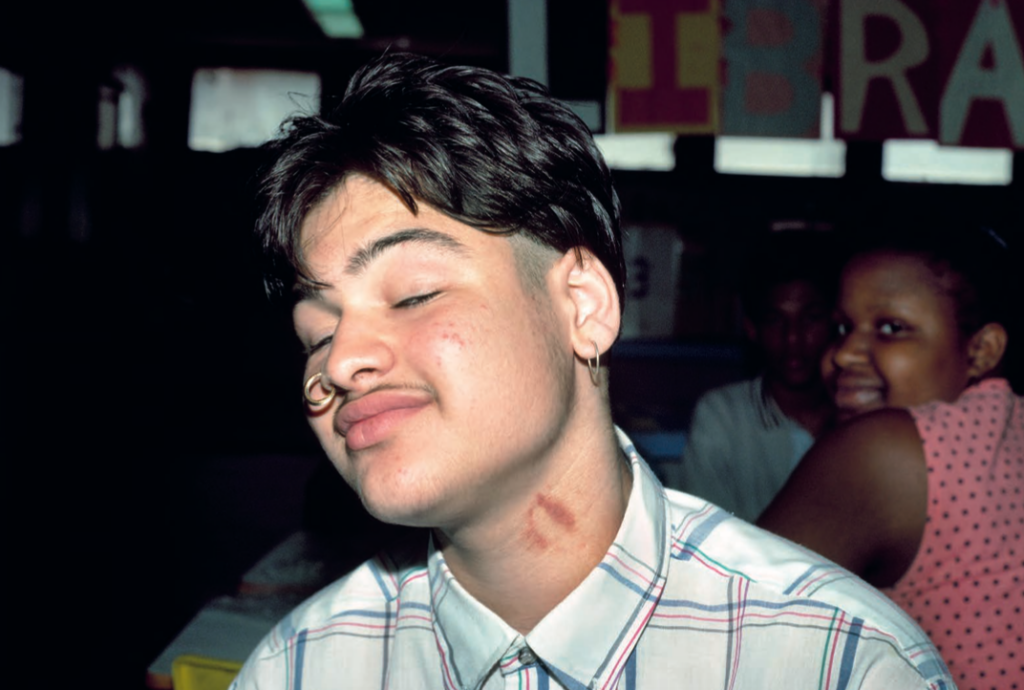

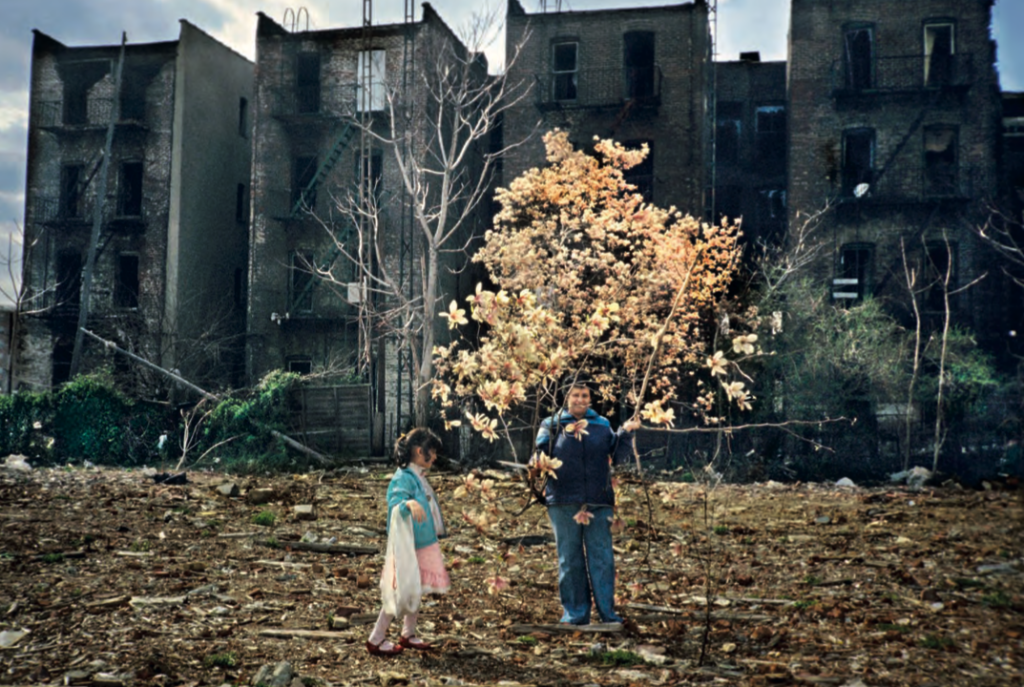
As for Meisler, she would stay teaching in Bushwick for a while, dedicating herself to art projects with her students, who continued to show up in her work — some of the latest pictures in the book show some of her students in the early 1990s. Around that time, a 1988 piece she made called “Question Marks” began making the rounds in the city’s art scene. It would first appear at a Group Material show at the Dia gallery and then it would eventually find its way to the 1991 Whitney Biennial, as part of the Group Material’s AIDS Timeline. Credited to Meisler and the “Drop Ins of Roland Hayes I.S. 291,” it was a pointedly different piece of work compared to the sympathetic, if exacting photos of the neighborhood she had taken earlier in the decade. A collage of decaying images of the school, arranged in a question mark, the work had a deliberate political edge (the first Dia show it had been at was called “Democracy,” and, there, it came coupled with handwritten notes that read things like “[T]he school was opened 13 years ago without a certificate of occupancy…It has been a battle against deterioration ever since.”)
The politics of her earlier images are more subdued — in her latest book, she compares herself to Vivian Maier, a Chicago nanny whose posthumously rediscovered street photography has been the subject of at least four documentaries over the last decade and whose minimally austere urban portraits showcase a collectively-remembered idea of city life. Meisler’s work does something similar, but somewhere far more particular. In fact, you might just recognize it yourself.
Meisler’s “New York PARADISE LOST Bushwick Era Disco” will be on display at ClampArt at 247 West 29th St. from June 3 to July 9 and then at the Center for Photography in Woodstock, NY from July 3 to August 15. You can catch a copy of her book here.
Andrew Karpan is a writer based in Ridgewood. You can reach him on Twitter or at [email protected]
All photos taken by Meryl Meisler
For more news, sign up for Bushwick Daily’s newsletter.
Join the fight to save local journalism by becoming a paid subscriber.

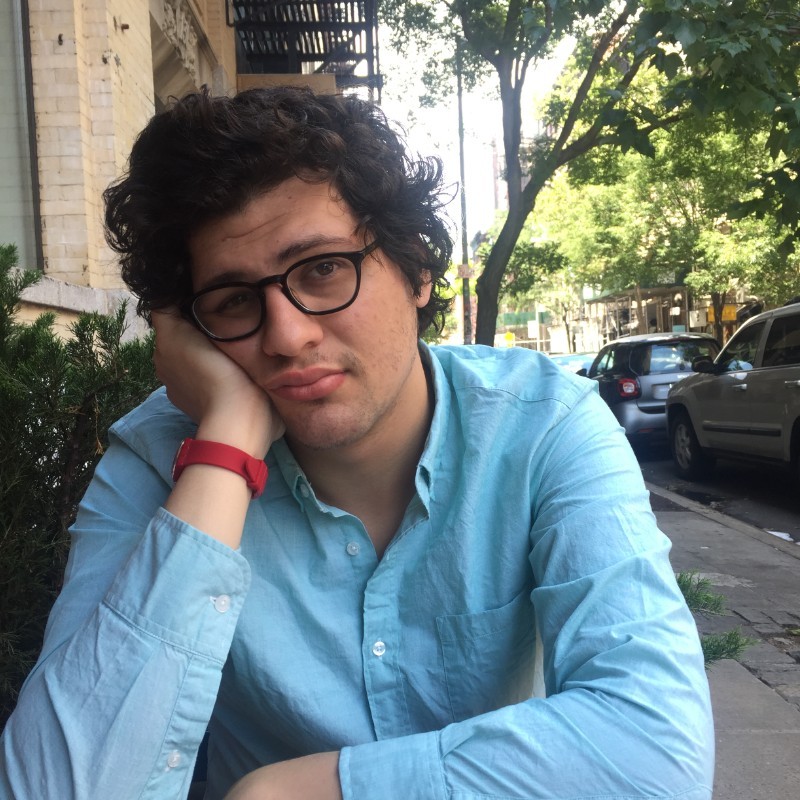



Bushwick was very much unsafe in 80’s.So much has changed. It now has become beautiful diverse neighborhood.
And high in living costs! But it definitely has come a long way for the better.
I can’t believe I’m reading this! Ms. Meisler was my 7th grade art teacher way back in 1992. She took her craft seriously and expected the same of her students! The physical aesthetic of Bushwick, along with the housing prices have changed, but the crime rate has not…better luck next time gentrification…
Dear Jammajuice-
Oh my. How nice it is to read your message!
I don’t know who you are by Jammajuice. Please contact me to say hello. I am on Instagram @Meryl Meisler , facebook or email on my website merylmeisler.com
Meryl ( AKA Ms. Meisler)
Tasty Bakery was located on Linden Street, not Star Street… this is a typo. Pictures are accurate… thanks for the article.
Hello if you are going to correct someone make sure you are right about making a point. i know personally they did have a sweet tooth company and the name of the Bakery was Called Eclairs Bakery co. They use to have the best strawberry shortcake to kiwi pies. All Fruit tarts to the perfect chocolate cookies mmmm i know because i worked there personally and yes they were there on Troutman st between wycoff and irving ave. The starr st bakery was the back emergency exit where the big giant oven let out the sweet smell of goodness pies and cookies baking mmm yes good ol memories.
All were by perfect designs, Esau AKA the Edomites have to enjoys their blessings regardless of our Nations in destructions !
The greatness of Yahawah will always shows us the deceptions of Esau AKA the so-called white people .
Thanks to Yahawah , their turns of destructions are here to stay. According to the scripture .
Separate ourselves from them.
We are a different Nation AKA the 12 Tribes of the real Israel !
Yahawah bless you.
Amazing how greenpoint, Bushwick,bed sty,areas in Brooklyn that went from a war zone with dilapidated burned out buildings to high end luxury style buildings . It’s insane. It’s also so much more gay friendly. My partner and I love it